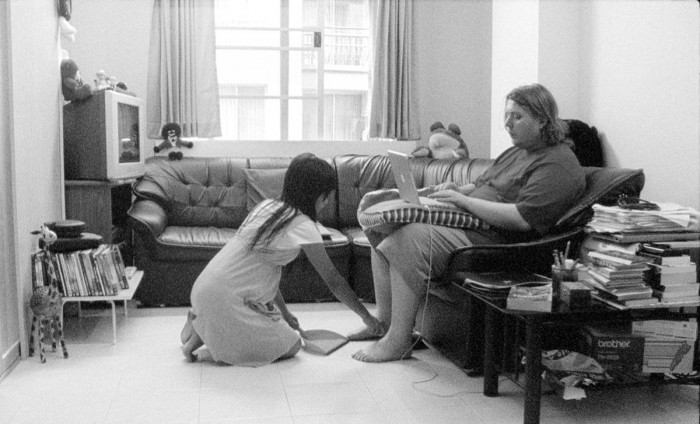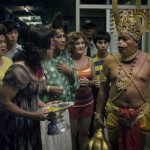By Leni De Castro
Directed by Thomas Clay
The typical scenario of a Western movie: a damsel in distress rescued by a stranger and they live happily ever after. Easy for intellectual digesting, but not for writer-director Thomas Clay who wants to pay homage to Western movies by injecting them with an Eastern twist.
Soi Cowboy‘s dreamlike black and white opening segment gives us a peek into the mundane life of a couple coming from the eastern and western backgrounds. It is about a “farang” or foreigner from Europe living with his Thai girlfriend with a baby on the way. Their day to day behaviour towards each other, tolerating each other’s idiosyncrasies like leaving shower doors open, the playing of noisy video games and differing eating habits are interrupted by little tokens of affection, stuffed toys and jewellery. In the giving of gifts, the appreciation of the value is magnified by the asking of the monetary value. Koi, the girl, wants to know how much it would cost her to resell the gift while Tobias, the boyfriend, finds this curiosity tolerable.
Tobias represents the thousands of expats in Thailand who try to immerse themselves in the culture whilst retaining the identity of a farang. This is the common scenario of a Westerner – in this case, a corpulent westerner who is searching for companionship, acceptance and love in a foreign land – and of a local, Koi, who finds the opportunity for a better life in Tobias. The brief encounter with her brother at a restaurant gives the impression that her family is in need of financial help and that they are hoping that, by marrying Tobias, Koi might find a solution to this problem. Tobias, on the other hand, is also trying to handle his own predicaments as a filmmaker.

Their trip to ancient Ayutthaya enforces their bond as a couple as they eat, sleep, and then engross themselves in the tourist culture of the place. Their happy faces while sipping their drinks across from each other suggests fondness and affection. To the viewer, this connotes a promise of the two of them happily living together in the future.
But, as life continues in the second segment, their beautiful black and white reality is wrecked by enlivening colours. A man, presumably one of Koi’s brothers, walks into their world by starting his day with a drink before going to work in the fields. Another disruption occurs when another of Koi’s brothers pays them a visit with the purpose of exacting vengeance for a bounty on the older brother’s head, upon directions of a Godfather-like Kingpin called “Uncle”. The whole family of Koi is indebted to this Uncle, as the last five scenes of the movie make apparent. Later, in one of those final segments, Tobias appears as the indifferent stranger who sits in the bar as a guest of the Uncle. Koi is presumed to be working for Uncle’s bar.
Thomas Clay’s method of deconstructing the story is brilliant, allowing audiences in turn to playfully reconstruct the film in their mind. A question that may be left unanswered is just who the owner is of the dream sequence in the film’s first segment. It could be anyone from Tobias or Koi to one of her brothers. The interesting twists and turns are punctuated by the different colours that surface to replace the original black and white. They vivify rice fields, country sides and the bar in what is presumably the Soi Cowboy district of Bangkok.
The film demands the patience of audiences. Long shots on ordinary objects may be deemed unimportant by many viewers, though they actually enhance the dream-like opening scene in the first segment, as if to say that no one has control of what the dream focuses on. The fast pace and colour of the second half reiterates the reality of life. It highlights the fact that Thailand is an Eastern frontier for a Western explorer looking for a good time, whether it be in the red light district or the tourist destinations of the country. But behind the colour lies the covert activity of business deals, debts to be paid and flesh to be traded.
Watch Soi Cowboy on FilmDoo.com. (Thailand only)
FilmDoo Also Recommends:








